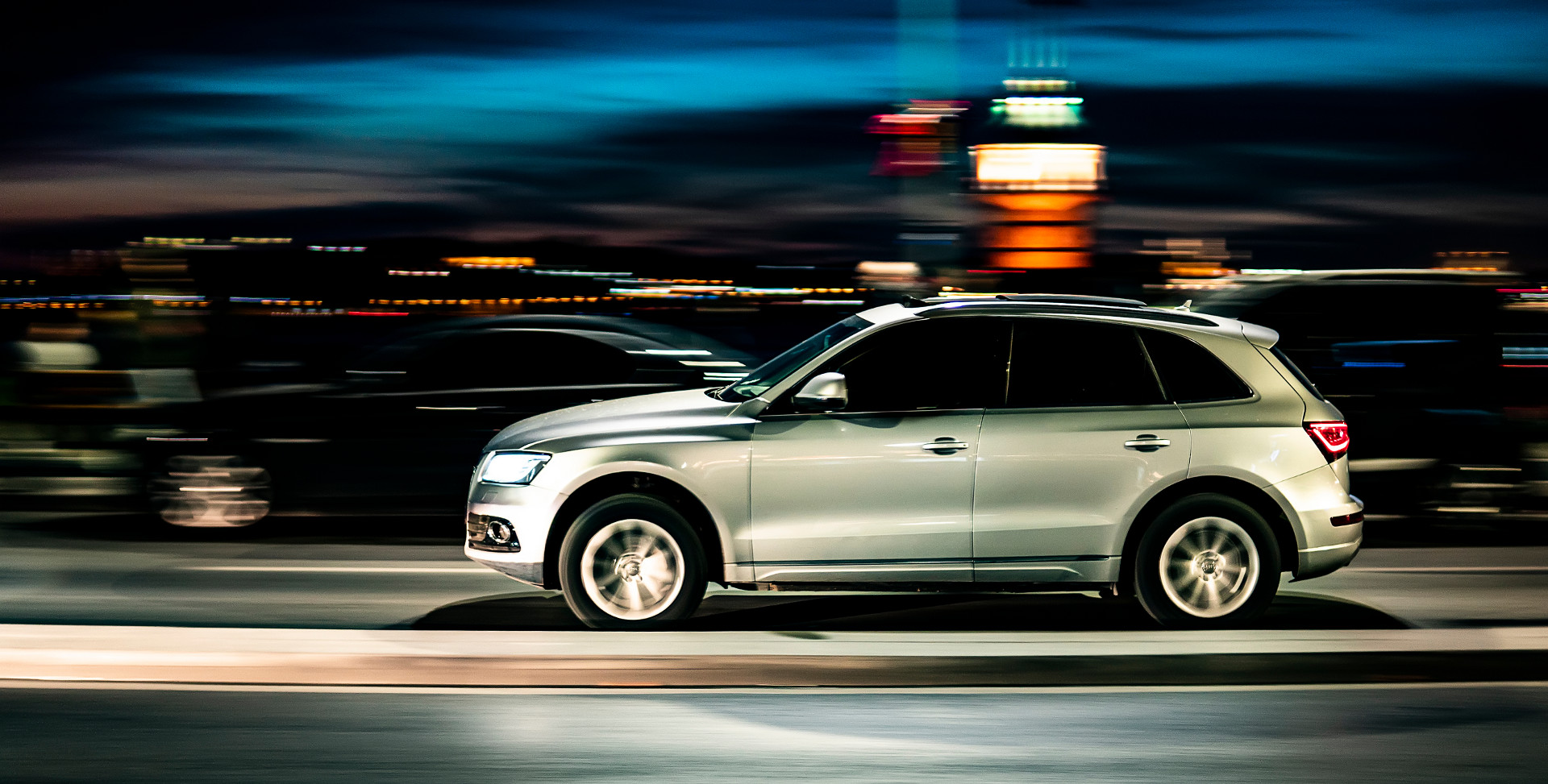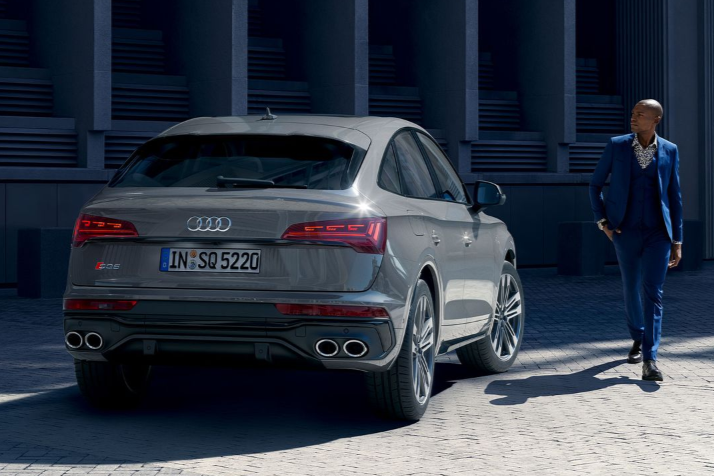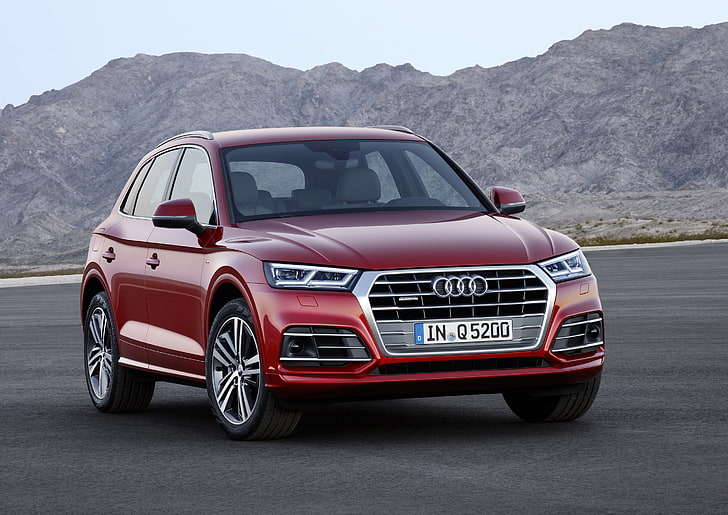The Audi Q5 made its Australian debut at the Melbourne International Motor Show back in 2009 and was launched shortly thereafter, becoming a direct competitor to the BMW X3, the Benz GLK and Lexus RX crossovers amongst others. Despite not being a sports vehicle, (the Q5 was officially marketed by Audi as a compact luxury crossover), there were some pretty impressive power figures generated in the first generation Audi Q5 line up; but bear in mind the model 8R weighed in at a hefty 1850kg.
What Engine does an Audi Q5 Have?
Listed from slowest to fastest (top speed), the performance figures for the first generation Audi Q5 engines are as follows:
| Engine | Power | Top Speed | 0-100km/h |
|---|---|---|---|
| 2 litre diesel turbo | 125kW | 204km/h | 9.9s |
| 2 litre petrol turbo | 155kW | 222km/h | 7.2s |
| 3 litre diesel turbo | 176kW | 225km/h | 6.5s |
| 3.2 litre petrol n/a | 199kW | 233km/h | 6.9s |
All of the above engines were fitted with the S-tronic 7 speed dual-clutch automatic transmission.
Despite being slightly larger than its predecessor, the second generation Audi Q5 weighed less; thanks in part due to design and build improvements in the body structure and suspension components. It’s worth mentioning that whilst the 2 litre engines were fitted with the 7 speed S-tronic auto, the 3 litre engines were fitted with the more conventional Tiptronic 8 speed transmission.
Performance figures for the second generation Audi Q5 (including the SQ5) are listed below:
| Engine | Power | Top Speed | 0-100km/h |
|---|---|---|---|
| 2 litre diesel turbo | 140kW | 218km/h | 8.1s |
| 2 litre petrol turbo | 185kW | 237km/h | 6.3s |
| 3 litre diesel turbo | 210kW | 237km/h | 5.7s |
| 3 litre petrol turbo | 260kW | 250km/h | 5.4s |
Both petrol and diesel drivetrains feature Audi’s Quattro Ultra all-wheel-drive system, which in addition to giving marginally better fuel economy, also has numerous other technological benefits. As always ensure that you have the correct Audi Q5 oil type in your engine. Audi’s Quattro enables the engine to provide power to the front wheels only, whilst having the capability to (almost instantaneously) enable all-wheel-drive. The Quattro Ultra system is unique in that it achieves this by using a multi-plate clutch between the transmission and the propeller shaft, plus a dogleg clutch in the rear axle differential. This disconnection prevents the rear wheels spinning the rear differential and prop shaft when the vehicle is in front-wheel-drive, which in turn improves fuel economy due to the reduced friction of the components.
Related: Audi Q7 Oil Type
The Audi Q5 also has different Audi Drive Select modes that can be selected. These are: comfort, auto, dynamic, off-road, and individual. Dynamic setting gives the Q5 a sportier feel; making adjustments to amongst other things, throttle response, transmission shift changes, as well as tightening aspects of the suspension and steering.

Enhancing The Speed Of An Audi Q5
There are two primary elements to consider when increasing the speed of any vehicle, which can also be used in conjunction with each other. The first is weight reduction and the second is increasing power (and if you want some extra homework there is also vehicle aerodynamics). For a road registered vehicle in the compact luxury class such as the Audi Q5, reducing weight is a fairly restricted undertaking. Sourcing lighter weight wheels are probably the only practical option in the way of weight reduction for a car that is in daily use. This, along with avoiding carrying unnecessary items in the boot are probably the only things worth mentioning when discussing the Audi Q5 and even these factors will not result in any noticeable difference in acceleration.
In the real world there are probably external aspects that have more influence on a good 0-100 time than shedding a bit of excess weight. Things like ambient air temperature, tyre pressures, fuel quality, wind speed and direction on the day, are just some contributors to variations in 0-100 times.
In the unlikely event of converting an Audi Q5 into a track car no stone would be left unturned. This would see every item removed that didn’t absolutely need to be there to perform the quarter-mile sprint. First to go would be the spare tyre, passenger seats and even go to the extreme of reducing weight by having half a tank of fuel instead of a full tank prior to taking it out on the track. A dedicated track car, while not needing to meet requirements for road use, would still need to pass certain standards to be eligible to race. This includes complying with regulations regarding the fitment of fire extinguisher/s and a certified roll cage being installed inside the vehicle.
There are a host of automotive performance suppliers that sell parts and accessories to improve the straight-line performance of vehicles in the Audi Q5 class. Although there are a myriad of options online, it is advisable to source both parts and professional advice from companies that can provide local support. For any questions surrounding the legalities of planned modifications, reading up on the local roads and traffic regulations, for example the NSW RMS website is a good place to start. Depending on the age of the vehicle, consulting the dealership regarding any vehicle warranty may be necessary; there’s also the probability of an insurance premium hike, once the insurance company is notified of the performance modifications.
Engine Performance Modifications Options for the Audi Q5
There are a number of automotive workshops and suppliers that cater for the Audi Q5, as it has been on the market for some years now. There is also a wealth of knowledge to be had through trawling the various Audi enthusiast forums for positive and negative (read scathing) reviews on particular brands or products. There really is no such thing as the perfect tuning chip for example, as each brand will have its own unique power delivery, but going for something reputable is always recommended given the costly repercussions of product failure.
For tuning purposes it’s also worth considering getting the modifications done at the same workshop which allows them to be a part of the process from start to finish. This also gives the technicians working on the car valuable oversight, ensuring they have ample background knowledge on the vehicle, should there be a need for troubleshooting in the future.
The list of modifications possible on an Audi Q5 is endless, but be warned – it is addictive. Once the world of huge horsepower gains is entered, longevity and reliability will inevitably go out the window along with fuel economy – though shortened service intervals can extend the life of some components to a point. It does stand to reason that when an engine is modified to put out substantially more power than it was designed to cope with from the factory, components will be placed under greater strain, shortening their lifespan. But for some of us; setbacks from broken parts are all part of the journey towards achieving the ultimate street weapon.
Once the world of huge horsepower gains is entered, longevity and reliability will inevitably go out the window along with fuel economy.
Improving Audi Q5 Handling
Arguably, the most neglected aspect of performance is not aftermarket engine modifications and software upgrades, but the consequences of them. Straight line performance is one thing, but an Audi Q5 on steroids also needs to be able to stop. Increasing the size of the brakes improves their ability to absorb the heat generated when jumping on the brake pedal in an emergency or under sustained braking from high speed. Drilled and slotted rotors also allow the heat to dissipate more quickly.
Reducing the centre of gravity by installing lower and stiffer suspension is far more than a cosmetic improvement. It is vital to ensure there is maximum traction across the whole powerband under full throttle and minimises air flow drag underneath the vehicle.
Audi Q5 Top Speed
The Audi Q5’s max. speed is 240km/h. Every Q5 has a limiter put in place by Audi to cap the top speed.
For the Audi Q5 owner who doesn’t want to risk life and limb by removing the limiter to find out, certain web based calculators make predictions on a vehicles theoretical top speed through a mathematical equation. All you need to do is fill in the blanks of the formula which typically include a combination of engine rpm, transmission ratios and overall tyre circumference amongst other things. More complex formulas go even further factoring in things like the vehicle’s drag coefficient; but aside from being a fun hypothetical investigation, it will always remain a theory.
Firstly these calculations don’t take into account the actual real world power of the engine and whether it has enough power in top gear to reach the red line (maximum rpm). Various factors which come into play when talking about reaching the ultimate top speed include tyre ratings, suspension set up and external aspects like wind resistance coupled with the engine’s ability to overcome it in top gear, not to mention how susceptible the car might be to crosswinds at high speed.
In short, the Audi Q5 will always be an SUV with a front grille the size of an apartment block and as such will never be the ideal car to be piloted beyond what it is governed to from the factory.
On the safety side of things, at extremely high speeds there are generally less second chances. A component failure as basic as a blown tyre could have disastrous consequences and even the slightest corrugation in road surface can send a vehicle airborne when careering along at speeds that aeroplanes take off at. (A typical 747 airliner is capable of take-off before reaching 300km/h).
The Audi Q5 is a brilliant car in its class and excels in the things most of us see as important, such as seating 4 adults comfortably, having luggage capacity for more than a set of golf clubs, and enough performance and handling to make the commute to work a fun one. It is not the ideal vehicle to break land speed records in, but there are enough modifications available to make it an extremely quick SUV, should you so desire.
The Audi Q5 will always be an SUV with a front grille the size of an apartment block and as such will never be the ideal car to be piloted beyond what it is governed to from the factory.
And Finally, One for the Physics Students
A modification to improve acceleration that looks good in theory, is reducing the rim size. Reducing the size of the wheels reduces the overall circumference of the tyre, which means the engine is using the same amount of power for the car to travel a shorter distance; which equals more force – faster acceleration. Add to the equation that a lighter wheel results in less inertia – the ability of an object to resist changes in movement, and it seems to be a bulletproof formula for success. But any increase in acceleration, is achieved at the cost of sacrificing top speed due to the higher rpm required in top gear (also potentially putting your speedo out of calibration). And as with a lot of things that look good on paper, any real life acceleration difference will most likely be in the scale of one hundredths of a second – that is, unnoticeable from the driver seat.
Information and advice in this article is general in nature and current at the time of publication, and no warranty is offered as to its accuracy or completeness.


